EYFS Activities - We’ve explored… foraging
Ruth Thomson
Monday, June 26, 2017
How a nature walk turned into foraging for wild flowers and making a cordial. By Annette Rawstrone

Children reacted with amazement and remarks of ‘no, you can’t’ when home-based childcarer Bridgit Brown commented that the flowers they were looking at could be consumed. Their interest led to the nature walk turning into a foraging project to make elderflower cordial.
‘It wasn’t planned, but seeing the elderflower bushes led to a spontaneous activity,’ says Ms Brown from Pebbles Childcare in Worthing, West Sussex. ‘There were such a huge amount of bushes at the children’s height that the children couldn’t fail to notice them. They were drawn to them by their vibrant white flowers and, because they are so distinctive, I was able to identify them as elderflower.’
Children looked closely at the flowers and their leaves and smelled their fragrance. They saw how the small white flowers grew in clusters spraying out from the branch and that the green leaves have slightly serrated edges.
Ms Brown spotted some nearby cow parsley, which can look very similar, so they compared the plants and the children used lots of mathematical language to discuss the differences, such as the size and colour of the leaves, the amount of foliage and the longer stems.
‘We talked about other things that grow on bushes and trees and the children started to name fruit such as apples and pears, so I told them that it’s possible to eat some flowers too. They had not heard of that before so I also found some dandelions for them to look at and told them that those flowers can be used to make dandelion and burdock to drink,’ she says. ‘It turned into a challenge for us to make elderflower cordial, and I think the children were super-excited because we normally only provide water or milk to drink.’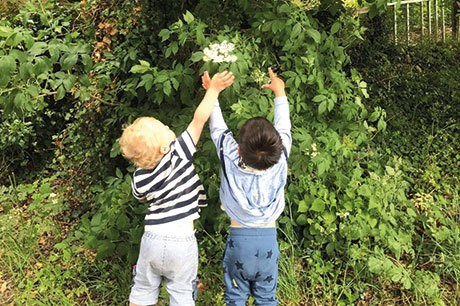
GETTING STUCK IN
On returning from the walk, the six under-fives used the iPad to investigate how to make elderflower cordial and find a recipe that they liked. They chose to use lemons and oranges in their cordial and wrote a shopping list of the necessary ingredients. The children discussed where to buy the ingredients and went to the shops to buy them. Locating citric acid proved to be difficult, but it was tracked down in a local brewing shop.
The following morning the children went out to harvest the elderflowers for their recipe. ‘There were so many learning opportunities from simply picking the flowers – from counting how many heads we had picked and how many more we needed to helping each other to pull down branches and reach the flowers. It was lovely,’ remarks Ms Brown.
When they came to wash the flowers they were intrigued to find small black bugs in them and they discussed why it was important to wash them off carefully. They also spoke about the importance of only picking and eating flowers and other plants when they are with an adult. Children were also aware that they should not eat the elderflower leaves or twigs because they could give them tummy ache and make them sick.
The after-school children were keen to join in the project and helped by slicing the fruit to be added to the cordial and helping to measure items. They were all intrigued to add granulated sugar to hot water and watch it dissolve.
‘It sparked lots of descriptive language and questions such as “it’s fizzing” and “where did it go?”,’ says Ms Brown. ‘There is a lot of sugar in the recipe. We do talk a lot about healthy eating and encourage it, but I feel the children need balance and this was a special treat.’
Children experienced the ‘sensory overload’ of the different smells as the different fragrant ingredients were added. ‘The children did a lot of observations of the mixture. At first it was clear water with the sliced fruit floating in it, but by the next day the fruit had sunk, the water was a yellow colour and the flowers were no longer white,’ Ms Brown recalls.
They then had to practise patience as they waited 24 hours for the mixture to steep before they could sieve and strain it.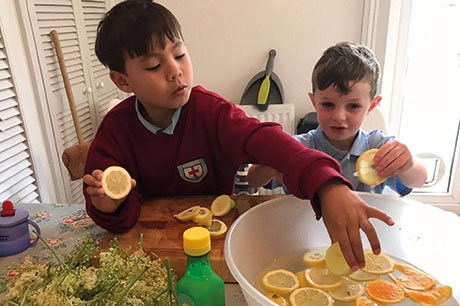
BOTTLED UP
The children were very proud of their creation and enjoyed tasting it. They bottled the cordial and gave it to their parents as gifts.
‘The parents really appreciated that this was something that the children had put a lot of effort into,’ says Ms Brown. ‘That weekend, many of the parents sent me pictures of themselves supping Prosecco and elderflower cordial.’
Children have since asked to make more things with the leftover cordial, so they walked to the local market and selected fruit – strawberries, raspberries and blueberries – to add to diluted elderflower cordial and make their own ice lollies and fruit ice cubes. ‘They had to have yet more patience as they waited for them to freeze before they enjoyed them the 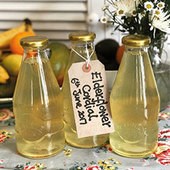 next day after dinner,’ Ms Brown says. ‘They enjoyed licking the lollies and guessing what fruit was under the ice.’
next day after dinner,’ Ms Brown says. ‘They enjoyed licking the lollies and guessing what fruit was under the ice.’
The children are now confidently able to identify elderflower bushes in their local environment and appreciate more about what they can make from natural produce. ‘We got so much out of such a simple and spontaneous activity,’ reflects Ms Brown. ‘I’m now giving further thought to what we can safely forage and also thinking about extending the activity to outdoor cooking.’
Grow wild…
Foraging is identifying, collecting and eating plants, flowers and berries that grow wild. Taking children foraging can help them to better understand how our food grows and how it is linked to the seasons.
It can strengthen the bond between us and our environment and create awe and wonder for it.
Another plus is that edible plants found in the wild often have more flavour, are more nutritious than those bought from the supermarket, and they are free.
What about safety?
Some plants are poisonous so make sure that your children know to only eat items they have picked when an adult is present.
Always take time to identify a plant before eating it – if in doubt, don’t eat it.
Check that it is not growing in a polluted area, such as by a busy road or low on a path used by dog walkers.
Another rule is to only pick what you need and leave the rest.
What to bring
The beauty of foraging is it’s a simple activity but it can be good to go prepared with:
- an identification guide
- baskets, buckets or bags to put harvested items into
- water bottles for refreshment and swilling the foraged food
- gardening gloves
- scissors or knife (although hands work well!).
What to look for
Some good plants to start with are: elderflower, dandelions, wild garlic, nettles and berries, such as blackberries.
BOOK CORNER
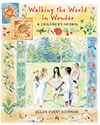 Walking the World in Wonder: A Children’s Herbal by Ellen Evert Hopman
Walking the World in Wonder: A Children’s Herbal by Ellen Evert Hopman
Each herb playfully introduces itself, talks about its habitat and uses and shows children the magic of using herbs for healing, cooking and crafts.
Wild Adventures by Brita Granstrom
Suggestions for exciting outdoor activities to encourage children’s awareness of the natural world and self-sufficiency skills, such as foraging, cooking outdoors, tracking and wildlife spotting.
A First Book of Nature by Nicola Davies
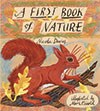 From watching squirrels, ducks and worms to making berry crumble, this book is part poetry and part scrapbook of recipes and facts.
From watching squirrels, ducks and worms to making berry crumble, this book is part poetry and part scrapbook of recipes and facts.
Food Free by Richard Mabey
A pocket guide for aspiring foragers. More than 100 edible plants are listed, fully illustrated and described along with recipes and fascinating facts.
Foraging for Wild Foods by David Squire
Divided into wild plants, herbs, fruits, nuts, mushrooms, seaweeds and shellfish, thi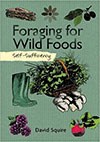 s guide includes clear illustrations and hints on how to prepare and eat your finds.
s guide includes clear illustrations and hints on how to prepare and eat your finds.
Foraging – The essential guide to free wild food by John Lewis-Stempel
A practical beginner’s guide to where, how and when to find edible wild food in both urban and rural environments.




